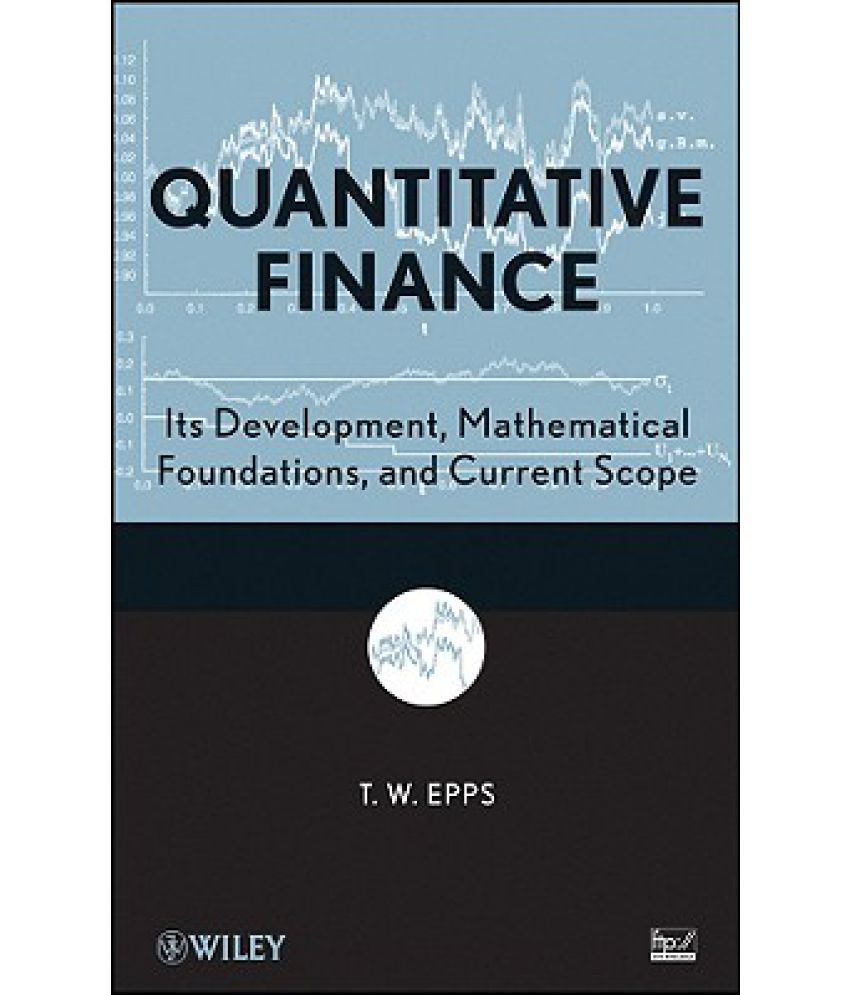Something went wrong. Please refresh the page and try again.
Something went wrong. Please refresh the page and try again.
Notifications can be turned off anytime from settings.
Item(s) Added To cart
Qty.
Something went wrong. Please refresh the page and try again.
Something went wrong. Please refresh the page and try again.
Exchange offer not applicable. New product price is lower than exchange product price
Please check the updated No Cost EMI details on the payment page
Exchange offer is not applicable with this product
Exchange Offer cannot be clubbed with Bajaj Finserv for this product
Product price & seller has been updated as per Bajaj Finserv EMI option
Please apply exchange offer again
Your item has been added to Shortlist.
View AllYour Item has been added to Shopping List
View AllSorry! Quantitative Finance is sold out.


You will be notified when this product will be in stock
| ||||||||||||||
Learn More about the Book
A rigorous, yet accessible, introduction to essential topics in mathematical finance
Presented as a course on the topic, Quantitative Finance traces the evolution of financial theory and provides an overview of core topics associated with financial investments. With its thorough explanations and use of real-world examples, this book carefully outlines instructions and techniques for working with essential topics found within quantitative finance including portfolio theory, pricing of derivatives, decision theory, and the empirical behavior of prices.
The author begins with introductory chapters on mathematical analysis and probability theory, which provide the needed tools for modeling portfolio choice and pricing in discrete time. Next, a review of the basic arithmetic of compounding as well as the relationships that exist among bond prices and spot and forward interest rates is presented.? Additional topics covered include:
Dividend discount models
Markowitz mean-variance theory
The Capital Asset Pricing Model
Static?portfolio theory based on the expected-utility paradigm
Familiar probability models for marginal distributions of returns and the dynamic behavior of security prices
The final chapters of the book delve into the paradigms of pricing and present the application of martingale pricing in advanced models of price dynamics. Also included is a step-by-step discussion on the use of Fourier methods to solve for arbitrage-free prices when underlying price dynamics are modeled in realistic, but complex ways.
Throughout the book, the author presents insight on current approaches along with comments on the unique difficulties that exist in the study of financial markets. These reflections illustrate the evolving nature of the financial field and help readers develop analytical techniques and tools to apply in their everyday work. Exercises at the end of most chapters progress in difficulty, and selected worked-out solutions are available in the appendix. In addition, numerous empirical projects utilize MATLAB(R) and Minitab(R) to demonstrate the mathematical tools of finance for modeling the behavior of prices and markets. Data sets that accompany these projects can be found via the book's FTP site.
Quantitative Finance is an excellent book for courses in quantitative finance or financial engineering at the upper-undergraduate and graduate levels. It is also a valuable resource for practitioners in related fields including engineering, finance, and economics.
On the Back Cover
A rigorous, yet accessible, introduction to essential topics in mathematical finance
Presented as a course on the topic, Quantitative Finance traces the evolution of financial theory and provides an overview of core topics associated with financial investments. With its thorough explanations and use of real-world examples, this book carefully outlines instructions and techniques for working with essential topics found within quantitative finance including portfolio theory, pricing of derivatives, decision theory, and the empirical behavior of prices.
The author begins with introductory chapters on mathematical analysis and probability theory, which provide the needed tools for modeling portfolio choice and pricing in discrete time. Next, a review of the basic arithmetic of compounding as well as the relationships that exist among bond prices and spot and forward interest rates is presented.? Additional topics covered include:
Dividend discount models
Markowitz mean-variance theory
The Capital Asset Pricing Model
Static?portfolio theory based on the expected-utility paradigm
Familiar probability models for marginal distributions of returns and the dynamic behavior of security prices
The final chapters of the book delve into the paradigms of pricing and present the application of martingale pricing in advanced models of price dynamics. Also included is a step-by-step discussion on the use of Fourier methods to solve for arbitrage-free prices when underlying price dynamics are modeled in realistic, but complex ways.
Throughout the book, the author presents insight on current approaches along with comments on the unique difficulties that exist in the study of financial markets. These reflections illustrate the evolving nature of the financial field and help readers develop analytical techniques and tools to apply in their everyday work. Exercises at the end of most chapters progress in difficulty, and selected worked-out solutions are available in the appendix. In addition, numerous empirical projects utilize MATLAB(R) and Minitab(R) to demonstrate the mathematical tools of finance for modeling the behavior of prices and markets. Data sets that accompany these projects can be found via the book's FTP site.
Quantitative Finance is an excellent book for courses in quantitative finance or financial engineering at the upper-undergraduate and graduate levels. It is also a valuable resource for practitioners in related fields including engineering, finance, and economics.
The images represent actual product though color of the image and product may slightly differ.
Register now to get updates on promotions and
coupons. Or Download App